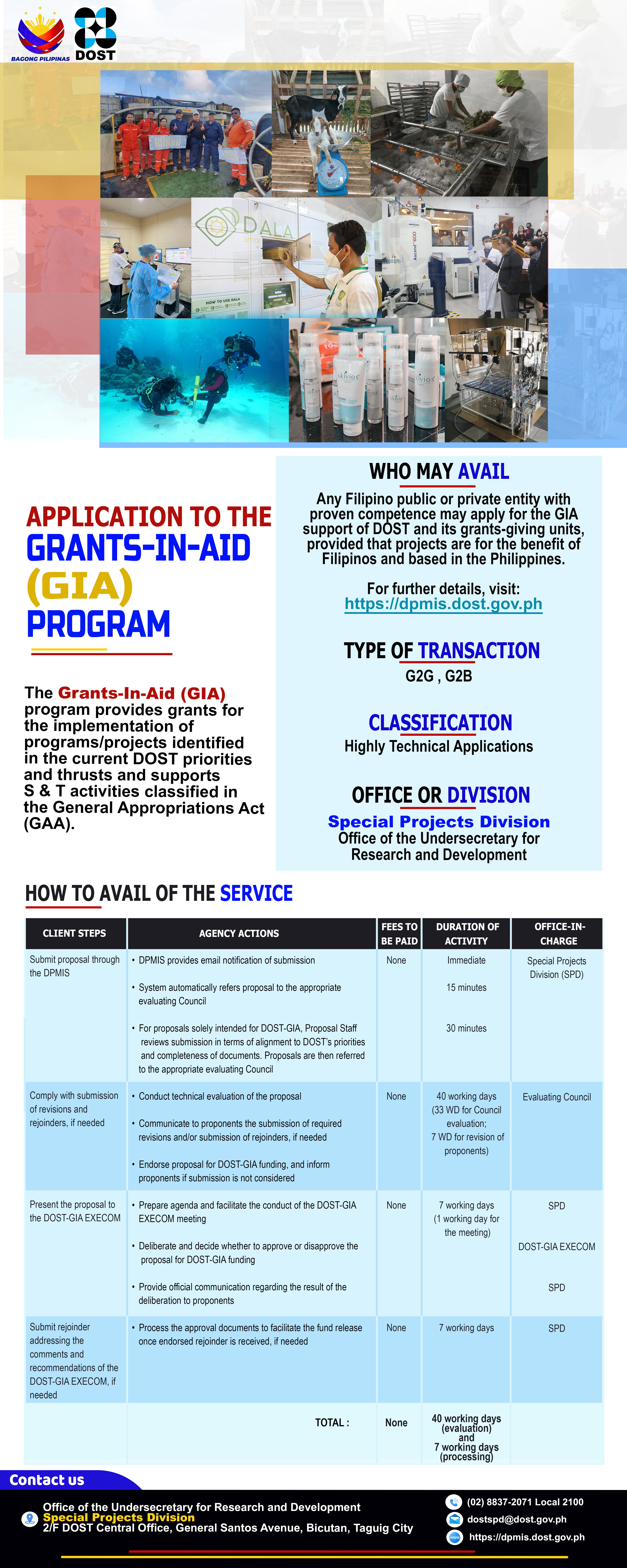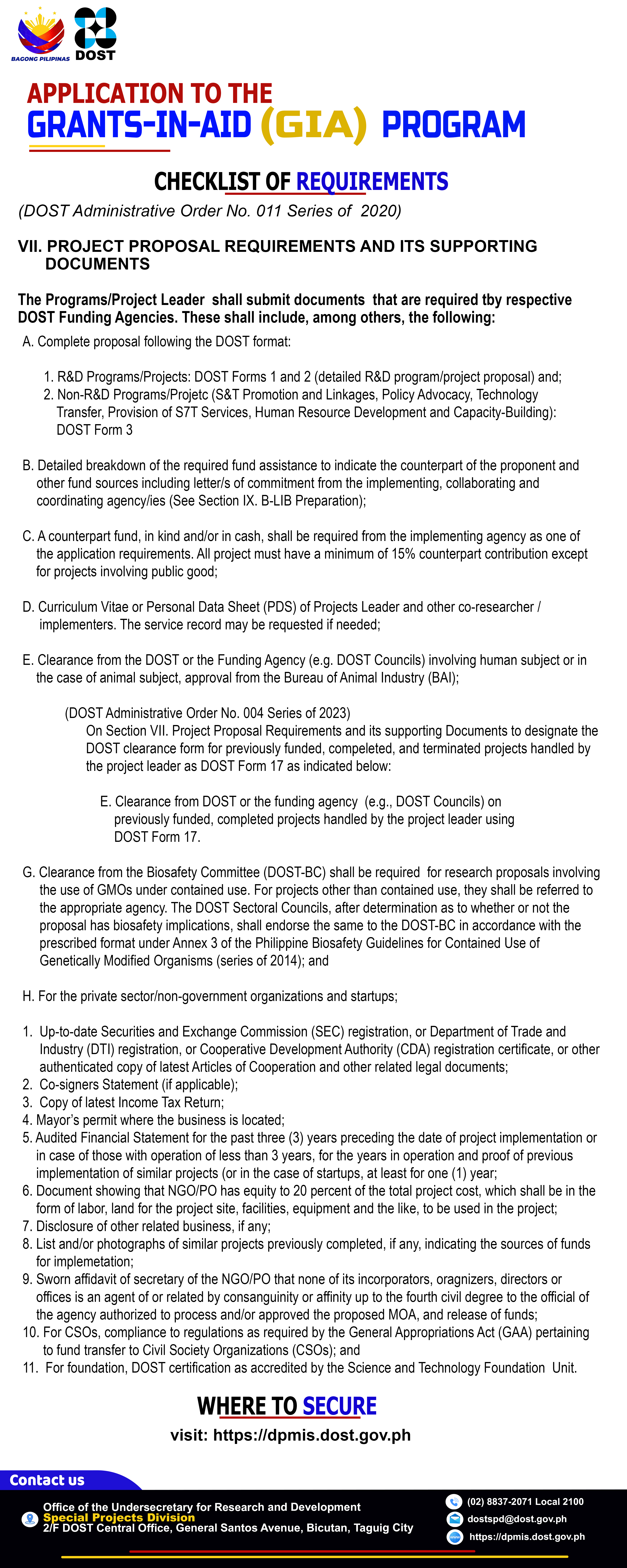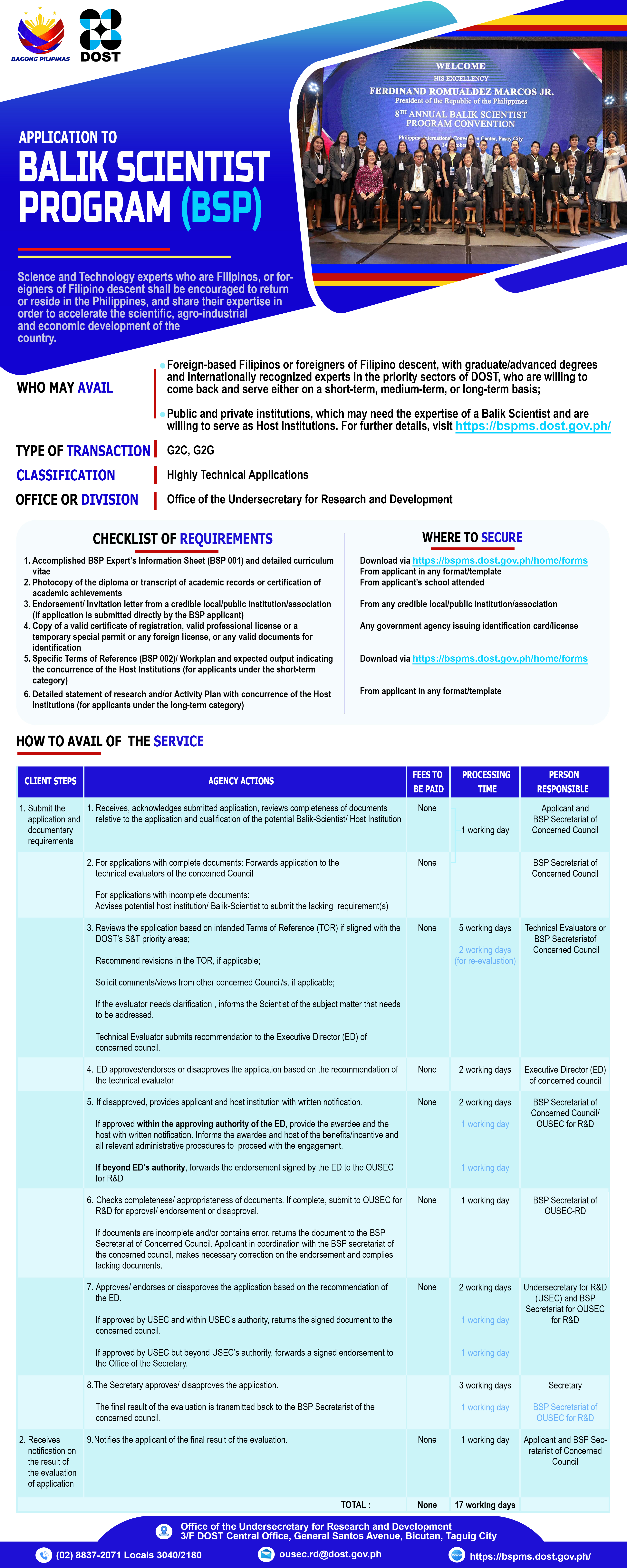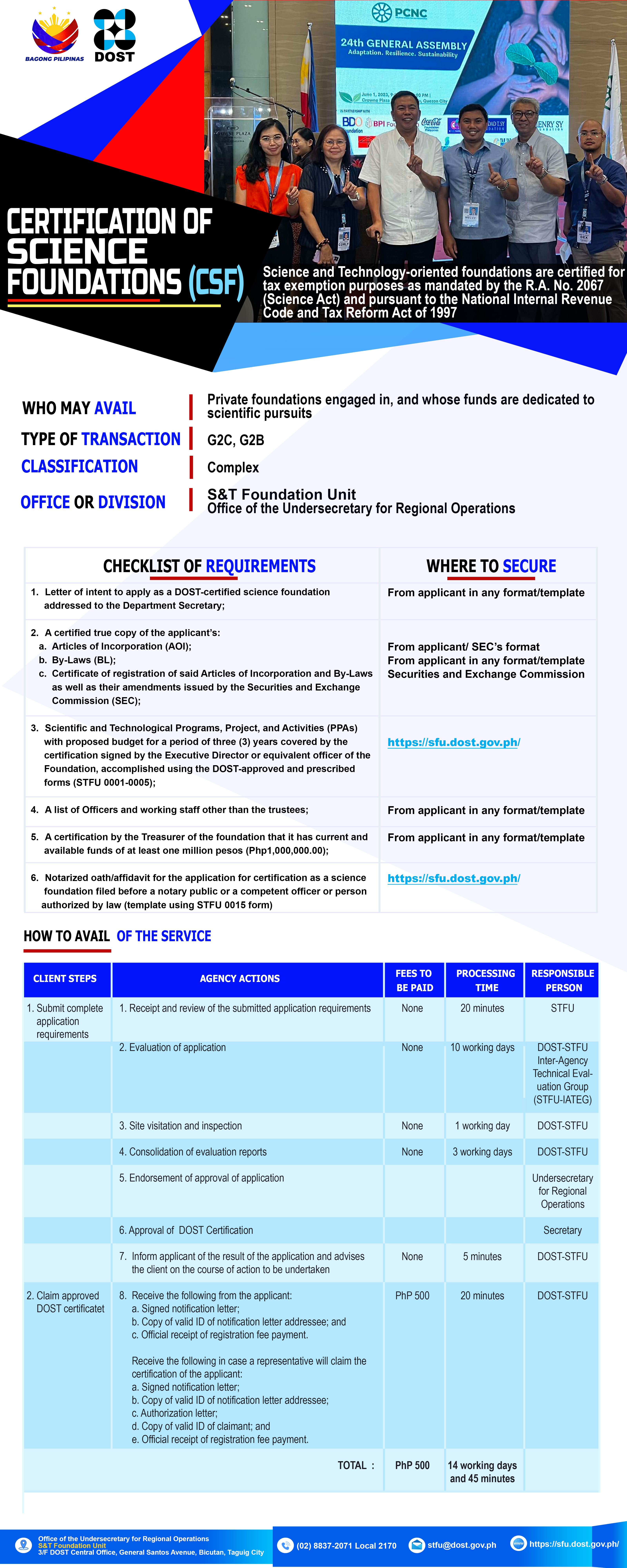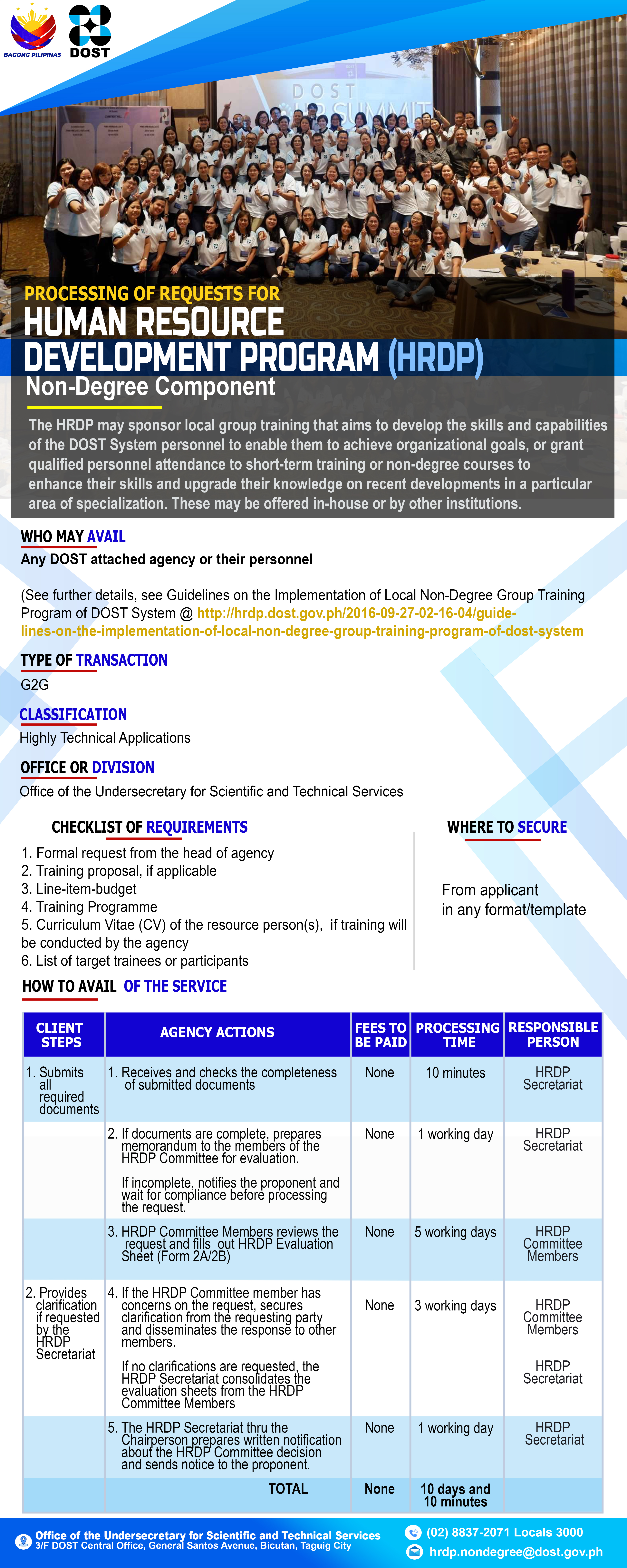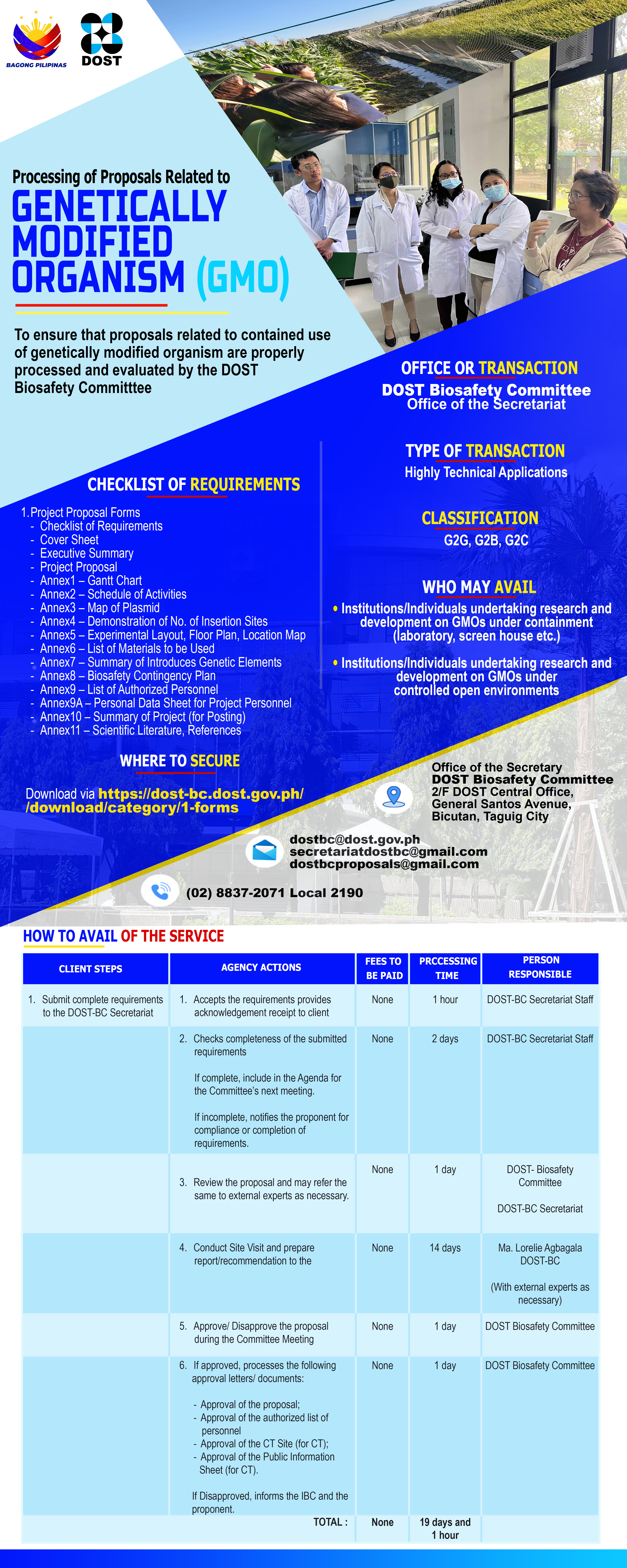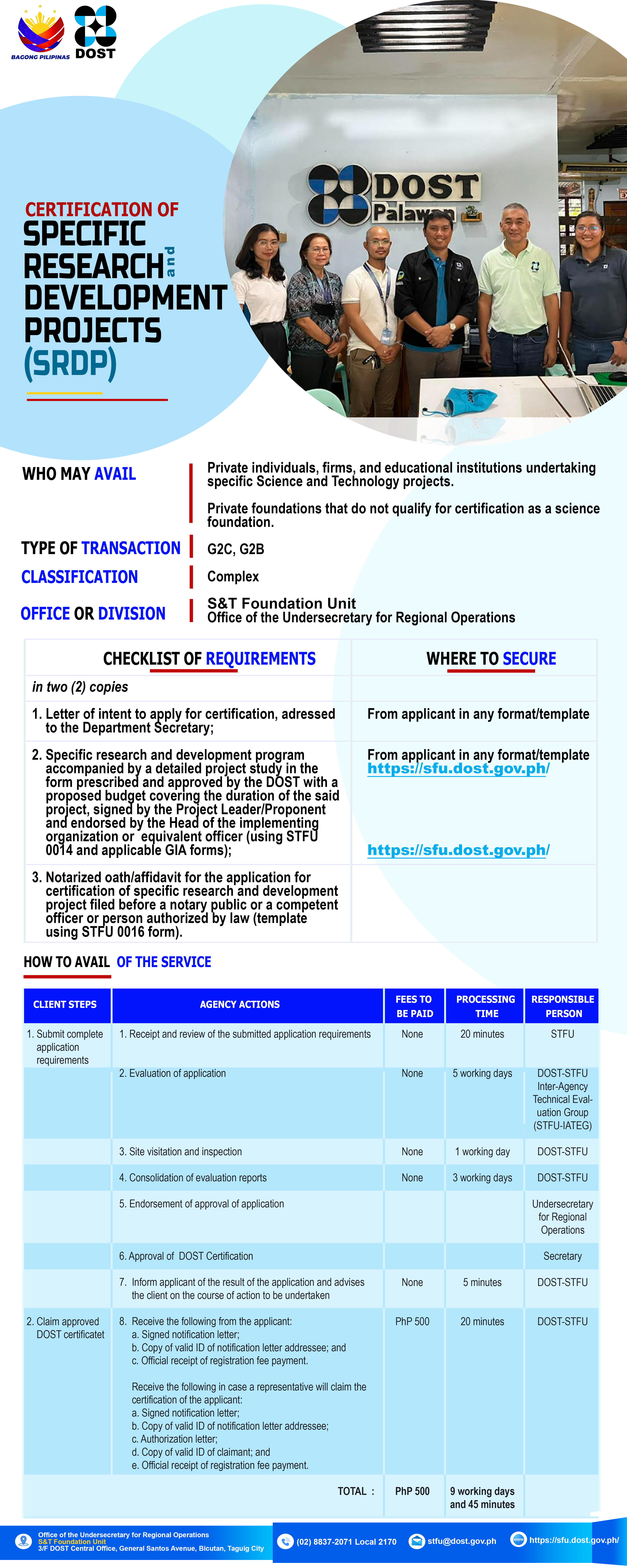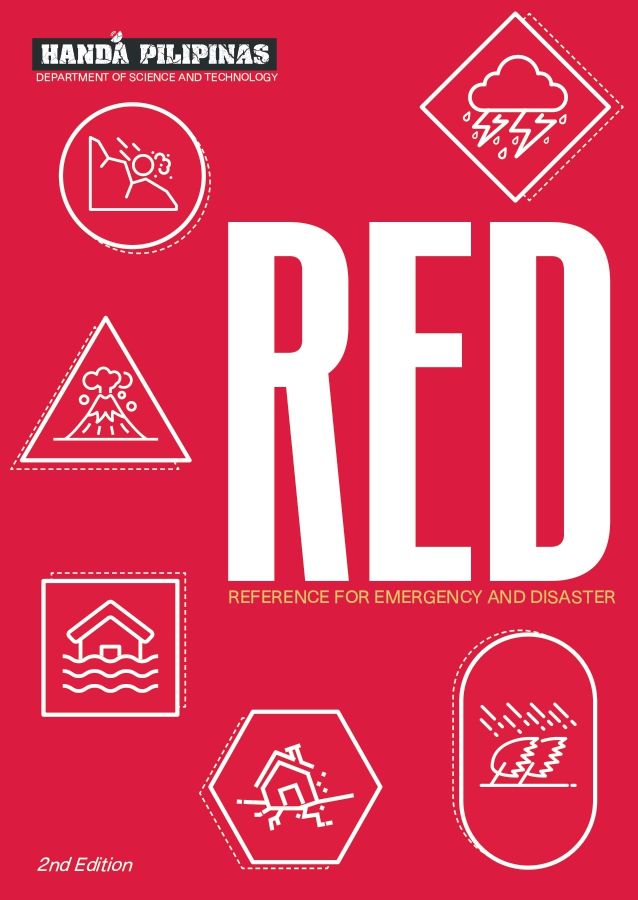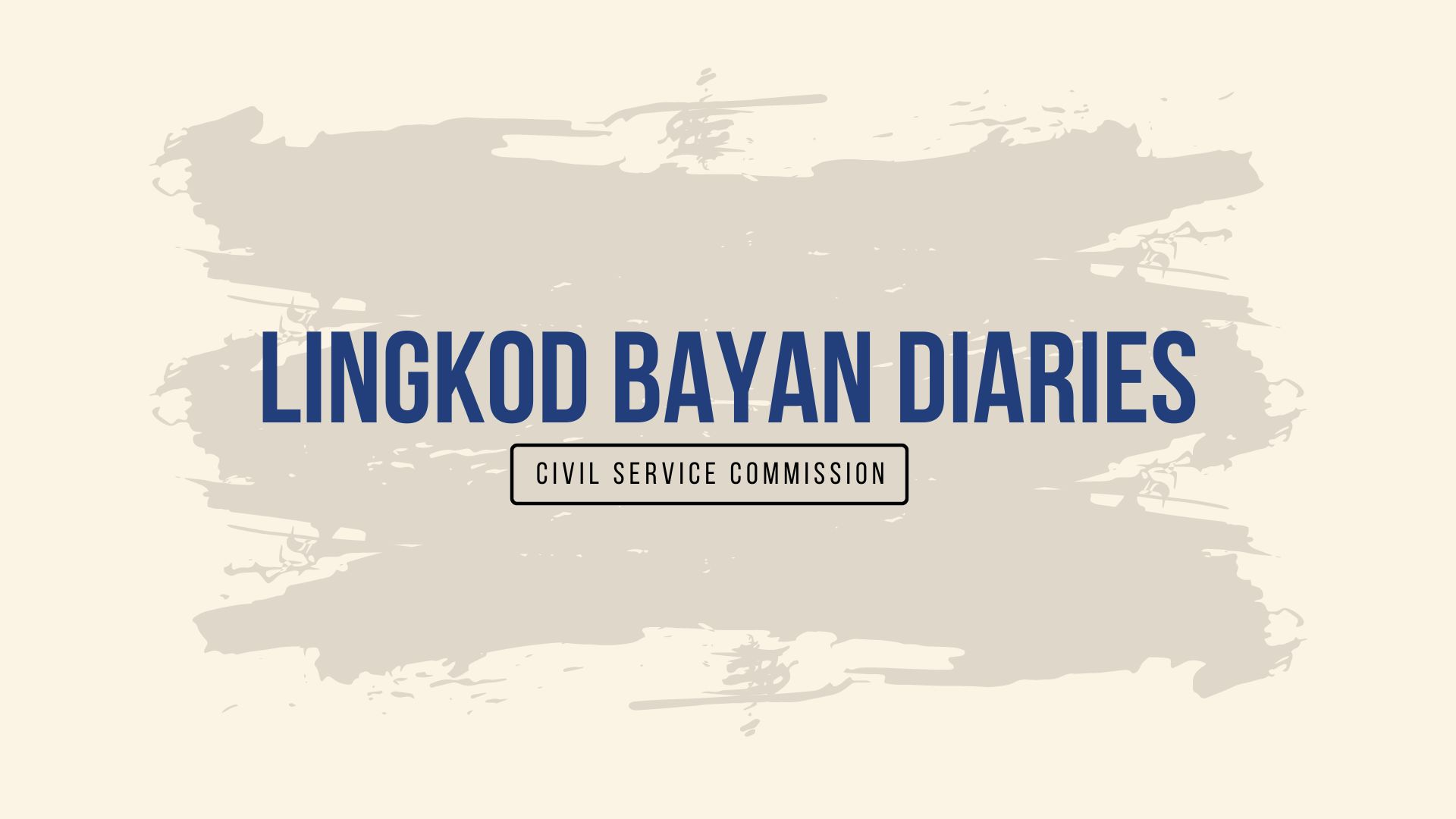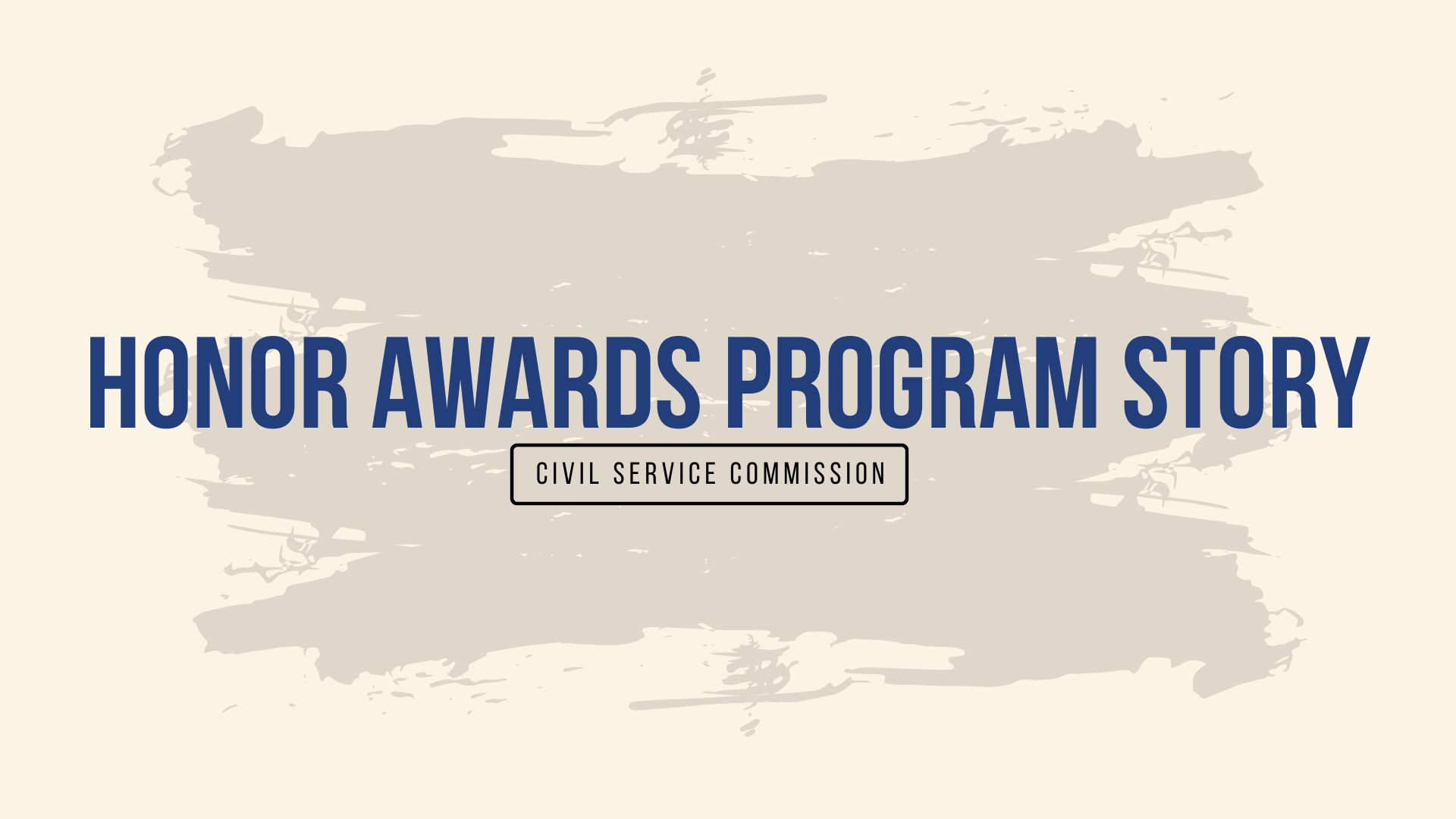Quick Links
 |
CITIZEN'S CHARTER |
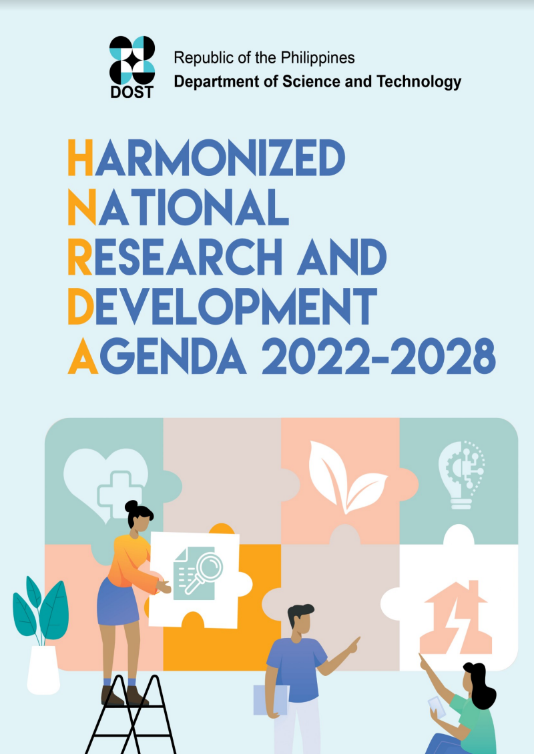 |
|
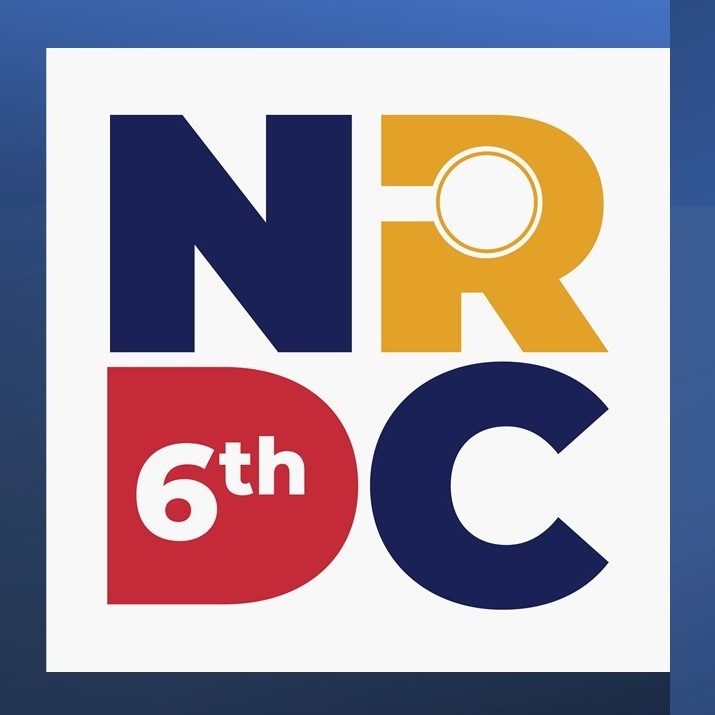 |
|
 |
GAD Corner |
 |
BIDS AND AWARDS |
|
JOB OPPORTUNITIES |
|
 |
|
 |
|
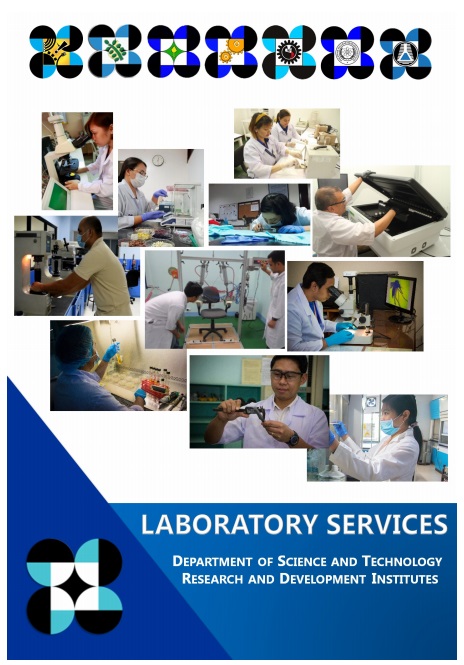 |
|
 |
SCIENCE.PH |
 |
DOSTv |
|
S&T SCHOLARSHIPS |
|
 |
SETUP |
 |
CEST |
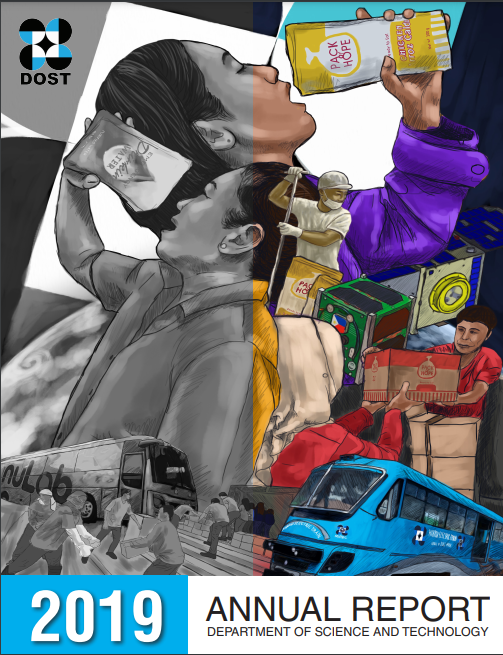 |
REPORT CARD MARC-1 MARC-2 PPARC |
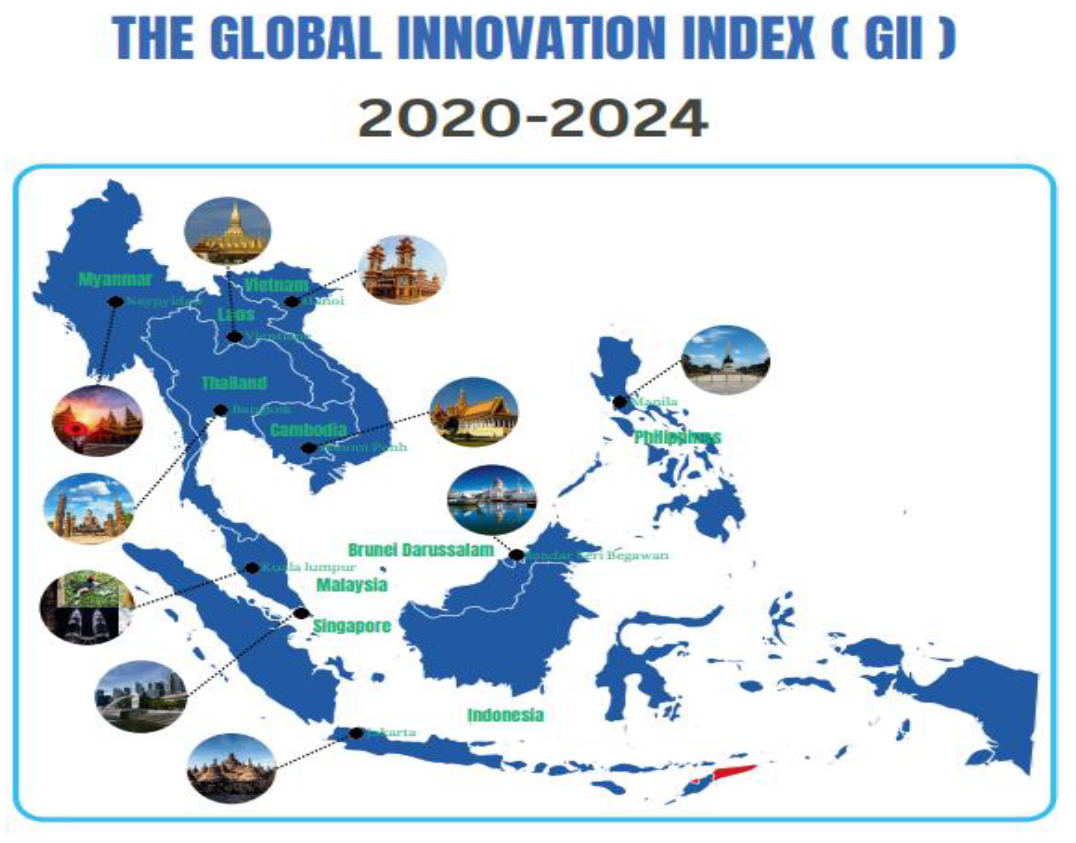 |
|
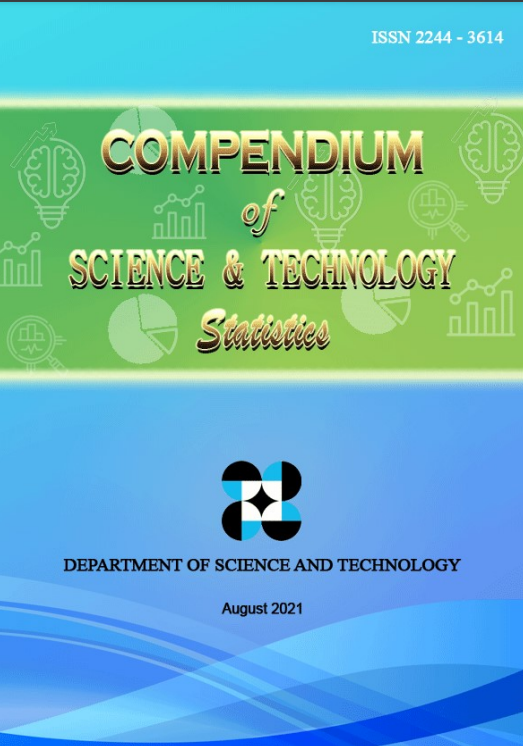 |
|
 |
Journals and Newsletters
 |
S&T POST The official newsletter of DOST |
 |
Balitang RapiDOST |
 |
DOST Digest A monthly publication of DOST |
 |
Philippine Journal of Science A journal that publishes reports of original research |
DOST Links
 |
ADMATEL |
 |
BCH PILIPINAS |
 |
SALINLAHI |
Other Links
|
IATSS FORUM |
|
|
PHILIPPINE SCIENCE CENTRUM |
|
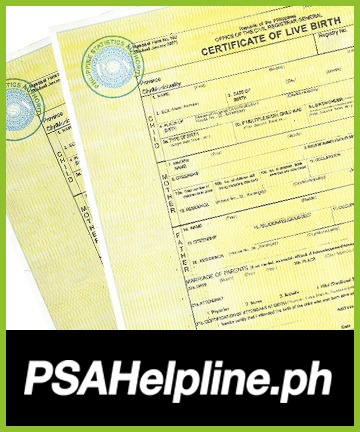 |
PSAHelpline.ph |
- Details
- Hits: 264866

S Y M B O L I S M
A pearl buried inside a tightly-shut shell is practically worthless. Government information is a pearl, meant to be shared with the public in order to maximize its inherent value.
The Transparency Seal, depicted by a pearl shining out of an open shell, is a symbol of a policy shift towards openness in access to government information. On the one hand, it hopes to inspire Filipinos in the civil service to be more open to citizen engagement; on the other, to invite the Filipino citizenry to exercise their right to participate in governance.
This initiative is envisioned as a step in the right direction towards solidifying the position of the Philippines as the Pearl of the Orient – a shining example for democratic virtue in the region.
Source: Section 7.0, National Budget Circular No. 542, August 29, 2012.
DOST Compliance with Section 91 of the General Appropriations Act FY 2014 (or RA 10633)
I. AGENCY'S MANDATE, VISION, MISSION AND LIST OF OFFICIALS
- The Agency's Mandate, Mission and Vision
- List of Officials
II. QUARTERLY AND ANNUAL FINANCIAL REPORTS
- 2024 FAR No. 1: ( DOST-OSEC | Central Office )
- 2023 FAR No. 1: ( DOST-OSEC | Central Office )
- 2022 FAR No. 1: ( DOST-OSEC | Central Office )
- 2021 FAR No. 1: ( DOST-OSEC | Central Office )
- 2020 FAR No. 1: ( DOST-OSEC | Central Office )
- 2019 FAR No. 1: ( DOST-OSEC | Central Office )
- 2018 FAR No. 1: ( DOST-OSEC | Central Office )
- 2017 FAR No. 1: ( DOST-OSEC | Central Office )
- 2016 FAR No. 1: ( DOST-OSEC | Central Office )
- 2015 FAR No. 1: ( DOST-OSEC | Central Office )
- 2014 FAR No. 1: ( DOST-OSEC | Central Office )
- 2013 FAR No. 1: ( DOST-OSEC | Central Office )
- 2024 FAR No. 1A
- 2023 FAR No. 1A
- 2022 FAR No. 1A
- 2021 FAR No. 1A
- 2020 FAR No. 1A
- 2019 FAR No. 1A
- 2018 FAR No. 1A
- 2017 FAR No. 1A
- 2016 FAR No. 1A
- 2015 FAR No. 1A
- 2014 FAR No. 1A
FAR No. 1B - List of Allotments and Sub-Allotments
- 2024 FAR No. 1B
- 2023 FAR No. 1B
- 2022 FAR No. 1B
- 2021 FAR No. 1B
- 2020 FAR No. 1B
- 2019 FAR No. 1B
- 2017 FAR No. 1B
- 2016 FAR No. 1B
- 2015 FAR No. 1B
- 2014 FAR No. 1B
FAR No. 3 - Aging of Due and Demandable Obligations
- 2023 FAR No. 3
- 2022 FAR No. 3
- 2021 FAR No. 3
- 2020 FAR No. 3
- 2019 FAR No. 3
- 2017 FAR No. 3
- 2016 FAR No. 3
- 2014 FAR No. 3
FAR No. 4 - Summary Report of Disbursements
- 2024 FAR No. 4: Summary Report of Disbursements
- 2023 FAR No. 4: Summary Report of Disbursements
- 2022 FAR No. 4: Summary Report of Disbursements
- 2021 FAR No. 4: Summary Report of Disbursements
- 2020 FAR No. 4: Summary Report of Disbursements
- 2019 FAR No. 4: Summary Report of Disbursements
- 2018 FAR No. 4: Summary Report of Disbursements
- 2017 FAR No. 4: Summary Report of Disbursements
- 2016 FAR No. 4: Summary Report of Disbursements
- 2015 FAR No. 4: Summary Report of Disbursements
- 2014 FAR No. 4: Summary Report of Disbursements
- 2013 FAR No. 4: Summary Report of Disbursements
FAR No. 5 - Quarterly Report of Revenue and Other Receipts
- 2024 FAR No. 5: ( DOST-OSEC | Central Office )
- 2023 FAR No. 5: ( DOST-OSEC | Central Office )
- 2022 FAR No. 5: ( DOST-OSEC | Central Office )
- 2021 FAR No. 5: ( DOST-OSEC | Central Office )
- 2020 FAR No. 5: ( DOST-OSEC | Central Office )
- 2019 FAR No. 5: ( DOST-OSEC | Central Office )
- 2018 FAR No. 5: ( DOST-OSEC | Central Office )
- 2017 FAR No. 5: ( DOST-OSEC | Central Office )
- 2016 FAR No. 5: ( DOST-OSEC | Central Office )
- 2015 FAR No. 5: ( DOST-OSEC | Central Office )
- 2014 FAR No. 5: ( DOST-OSEC | Central Office )
FAR No. 6 - Statement of Approved Budget, Utilization, Disbursement and Balances for Trust Receipts
BAR No. 1 - Quarterly Physical Report of Operations / Physical Plan
- 2024 BAR No. 1 - Quarterly Physical Report of Operations / Physical Plan
- 2023 BAR No. 1 - Quarterly Physical Report of Operations / Physical Plan
- 2022 BAR No. 1 - Quarterly Physical Report of Operations / Physical Plan
- 2021 BAR No. 1 - Quarterly Physical Report of Operations / Physical Plan
- 2020 BAR No. 1 - Quarterly Physical Report of Operations / Physical Plan
- 2019 BAR No. 1 - Quarterly Physical Report of Operations / Physical Plan
- 2018 BAR No. 1 - Quarterly Physical Report of Operations / Physical Plan
- 2017 BAR No. 1 - Quarterly Physical Report of Operations / Physical Plan
- 2016 BAR No. 1 - Quarterly Physical Report of Operations / Physical Plan
- 2015 BAR No. 1 - Quarterly Physical Report of Operations / Physical Plan
- 2014 BAR No. 1 - Quarterly Physical Report of Operations / Physical Plan
- 2013 BAR No. 1 - Quarterly Physical Report of Operations / Physical Plan
IV. PROJECTS, PROGRAMS AND ACTIVITIES, BENEFICIARIES, AND STATUS OF IMPLEMENTATION
DOST-GIA Approved Projects
V. ANNUAL PROCUREMENT PLAN
- 2025 ( APP | APP-CSE )
- 2024 ( APP | APP-CSE )
- 2023 ( APP | APP-CSE )
- 2022 ( APP | APP-CSE )
- 2021 ( APP | APP-CSE )
- 2020 ( APP | APP-CSE )
- 2019 ( APP | APP-CSE )
- 2018 ( APP | APP-CSE )
- 2017 ( APP | APP-CSE )
- 2016 ( APP | APP-CSE )
- 2015 ( APP )
- 2014 ( APP )
- 2013 ( APP )
- 2024 Procurement Monitoring Report
- 2023 Procurement Monitoring Report
- 2022 Procurement Monitoring Report
- 2021 Procurement Monitoring Report
- 2020 Procurement Monitoring Report
- 2019 Procurement Monitoring Report
- 2018 Procurement Monitoring Report
- 2017 Procurement Monitoring Report
- 2016 Procurement Monitoring Report
- 2015 Procurement Monitoring Report
- 2014 Procurement Monitoring Report
- 2013 Procurement Monitoring Report
VIII. CERTIFICATION OF COMPLIANCE
- PhilGEPS Certification of Compliance
- Early Procurement Certification of Compliance
- Agency Procurement Compliance Performance Indicator (APCPI)
- Report on Aging of Cash Advance
- Anti-Red-Tape Act (ARTA) Compliance Certification
- Statement of Assets, Liabilities, and Net Worth (SALN)
- Performance Based Bonus (PBB) Accomplishment Report
- Performance Based Bonus (PBB) Scorecard
- MFO Accountability Report Card (MARC-1)
- Management Accountability Report Card (MARC-2)
- Priority Program Accountability Report Card (PPARC)
- DOST-CO Review and Compliance Committee
- Review and Compliance Procedure Concerning the Statements of Assets, Liabilities & Net Worth (SALN)
- Certificate of Implementation of Audit Recommendations
- NPC Seal of Registration
- Details
- Hits: 107180
Certification of Eligibility of Non-DOST System S&T Personnel under R.A. No. 8439
CERTIFICATION OF ELIGIBILITY OF NON-DOST SYSTEM S&T PERSONNEL UNDER R.A. NO. 8439
Office of the Assistant Secretary for Administration
2/F Prototyping Division Building, MIRDC Compound
Trunk line No. No.
(02) 8837-2071 local 3050
E-mail: This email address is being protected from spambots. You need JavaScript enabled to view it.
Website: http://www.dost.gov.ph/
For the availment of benefits under R.A. No. 8439, also known as the Magna Carta for Scientists, Engineers, Researchers and Other Science and Technology (S&T) Personnel in Government, certification of eligibility is issued to qualified Non-DOST System S&T personnel.
If requirements are complete, this transaction can normally be completed within three (3) months.
WHO MAY AVAIL OF THE SERVICE
All non-DOST System personnel in government who are involved in S&T activities (STA) may avail of the benefits under R.A. No. 8439 upon certification of the DOST Secretary.
REQUIREMENTS
To be submitted by the agency
- Report of the Agency Screening Committee, which include analysis of qualification of each applicant being recommended and signed by the Agency Screening Committee Chairperson and members
- Official endorsement by head of agency. If the head of agency is applying, his/her application shall be endorsed by the Department Secretary
- Organizational and Functional Charts
- Agency/ Profile/ Description (Mandates, Thrusts and Programs)
- Endorsement by head of agency and/or department, where applicable
- Functions of the service/division/unit/section where the personnel belongs
- Position title, salary grade and description of actual duties and responsibilities with corresponding percentage time allocation
- Certified true copy of diploma/s
- Certified true copy of academic transcript of records
- For applicants with scientist rank conferred by the Scientific Career Council (SCC), Certification of good standing issued by the SCC
- Other relevant documents that may be required by the DOST Screening Committee
SCHEDULE OF AVAILABILITY OF SERVICE:
Monday-Friday
8:00 AM-5:00 PM
HOW TO AVAIL OF THE SERVICE
| Step | Person/Office Responsible | Activity | |
| 1 | Head of Requesting Agency | Submits the endorsement letter re the application of the employee to the DOST Screening Committee. | |
| 2 | DOST-Screening Committee (SC) Secretariat | Acknowledges the receipt of the application. | |
| 3 | DOST-SC Secretariat | Checks completeness of documents. | |
| 4 | WG Secretariat |
If the document is complete, prepares the matrix for evaluation of TWG and forwards the documents to the Working Group. If the document is incomplete, prepares letter for signature of the SC Chairperson informing the agency head of applicants who do not comply with the documentary requirements. |
|
| 5 | Working Group (WG) | Reviews the completeness of the submitted documents of applicants. | |
| 6 | DOST-SC |
Evaluates the following: Advises the DOST-SC if the agency is not qualified. Sends the recommendation to the DOST SC. |
|
| 7 | DOST-SC |
Reviews WG endorsement of the individual applicants. Returns the applications to the WG for re-evaluation, if SC does not agree with the recommendation of WG. |
|
| 8 | Secretariat |
Prepares the following: |
|
| 9 | DOST-SC | Signs the final matrix of approved/ disapproved applicants and the recommendation letter to the Secretary. | |
| 10 | DOST Secretary | Acts on the SC recommendation. | |
| 11 | DOST-SC Secretariat |
Sends the letter to the proponent re: |
|
Application to the DOST-JSPS Joint Scientific Research Program
APPLICATION TO THE DOST-JSPS JOINT SCIENTIFIC RESEARCH PROGRAM
International Technology Cooperation Unit (ITCU)
2/F ADMATEL Building
Trunk line No. 837-2071 to 82 local 2001
Telefax No. 838-8376
Email address: This email address is being protected from spambots. You need JavaScript enabled to view it. ; This email address is being protected from spambots. You need JavaScript enabled to view it.
Website: http://www.jsps.gov.jp/english / http://itcu.dost.gov.ph
The DOST - JSPS Joint Scientific Research Program is an inter-institutional cooperative arrangement initiated on 15 March 1979 through the signing of a Memorandum of Understanding (MOU) for Scientific Cooperation between the then National Science Development Board (now the Department of Science and Technology) and the Japan Society for the Promotion of Science (JSPS).
This bilateral program aims to establish sustainable collaborative relations for the advancement of the mutual benefits of the Philippines and Japan under the principle of reciprocity. It also aims to promote scientific researches and exchanges thorough exchange of scientists, holding of scientific seminars, and conduct of dissertation and degree researches under the joint guidance of Filipino and Japanese advisers. The Program is designed to create high potential research nuclei in the fields of natural sciences, social sciences and humanities. The Program fosters and looks after the next generation of leading researchers in the country.
Application to the Joint Research Program
WHO MAY AVAIL OF THE SERVICE:
All Filipino researchers from universities and research institutions that plan to establish or that have already existing scientific collaborations with Japanese researchers by submitting research proposals for funding consideration. For Filipino researchers requiring DOST funding, the five priority areas include: Health and Health Products, Alternative Energy, Biotechnology, Food and Agriculture, Environment, and Information Communication Technology.
If requirements are complete, the processing of application may take a year.
Note: Only one project will be selected yearly and project requiring DOST funding must not be more than Japanese counterpart.
HOW TO AVAIL OF THE SERVICE :
| Step | Proponent | Activity of the Office-in-Charge | Duration of Activity | Office-in-charge |
| 1 | Submits DOST-GIA Forms 1B, 2B, 2B-1, 2B-2, LIB to DOST JSPS Secretariat | Reviews the completeness of documents | 3 working days | DOST-JSPS Secretariat |
|
If documents are complete, prioritize projects for review by Sectoral Councils. If incomplete, informs the proponent. |
3 days per proposal | DOST-JSPS Secretariat | ||
| Exchanges list of submitted proposals to verify if the proposal was submitted by the counterpart proponents from each country
|
1 working day | DOST and JSPS | ||
|
Endorses the proposal (with the similar proposal submitted to JSPS by Japanese proponent) to the concerned Sectoral Council for review |
1 working day | DOST-JSPS Secretariat | ||
| Reviews and evaluates proposal | 1 working day | DOST Sectoral Council | ||
| Determines which proposals to support/ selects proposal to be funded | DOST EXECOM | |||
| Exchanges priority list
|
4 to 5 months | DOST and JSPS | ||
| Final selection of project | 5 working days | DOST and JSPS | ||
|
Informs proponent of selected proposal |
5 working days after project selection | DOST and JSPS |
Procedure in Filing Complaint
PROCEDURE IN FILING COMPLAINT
| Step | Action | Office/Person Responsible | Processing Time | Location of Office |
| 1 | Client submits the accomplished DOST Complaint Form personally or through courier, or e-mail at This email address is being protected from spambots. You need JavaScript enabled to view it. | Clerk/Receiving staff at the Records Section or at the Personnel Division | 5 minutes | Personnel Division |
| 2 | DOST conducts inquiry/investigation | Personnel Division | 3 working days | Personnel Division |
| 3 | DOST informs/updates the complainant of the action taken on the complaint thru letter or e-mail | Personnel Division | 1 working day | Personnel Division |
- Details
- Hits: 166449
The DOST Secretary
|
Dr. RENATO U. SOLIDUM, JR. Department of Science and Technology 2022-present |
|
Past DOST Secretaries
2010-2016 ENGR. MARIO G. MONTEJO
 |
ENGR. MARIO G. MONTEJO Mario G. Montejo served as Secretary of the Department of Science and Technology from 2010 to 2016. |
Secretary Montejo, a mechanical engineer by profession and an innovator, believes that the use of science and technology is always a sound development model for the improvement of the individual and society in terms of improved processes, products, services.
With his substantial background in engineering design and innovation spanning more than 20 years, he was selected as the 2014 UP Alumni Association (UPAA) Most Distinguished Alumnus, and 2011 Distinguished Alumnus in Science and Technology. In 2010, the UP College of Engineering has named him one of the “100 Outstanding Alumni Engineers of the Century” during the Centennial celebration of the University of the Philippines.
Before joining the government service, Secretary Montejo was president of several engineering related firms along with the more recent ecotourism-related company.
His motto, ‘Local technology works!’ affirms a belief in the creativity of Filipinos particularly the Philippine scientific community.
2001-2010 DR. ESTRELLA F. ALABASTRO
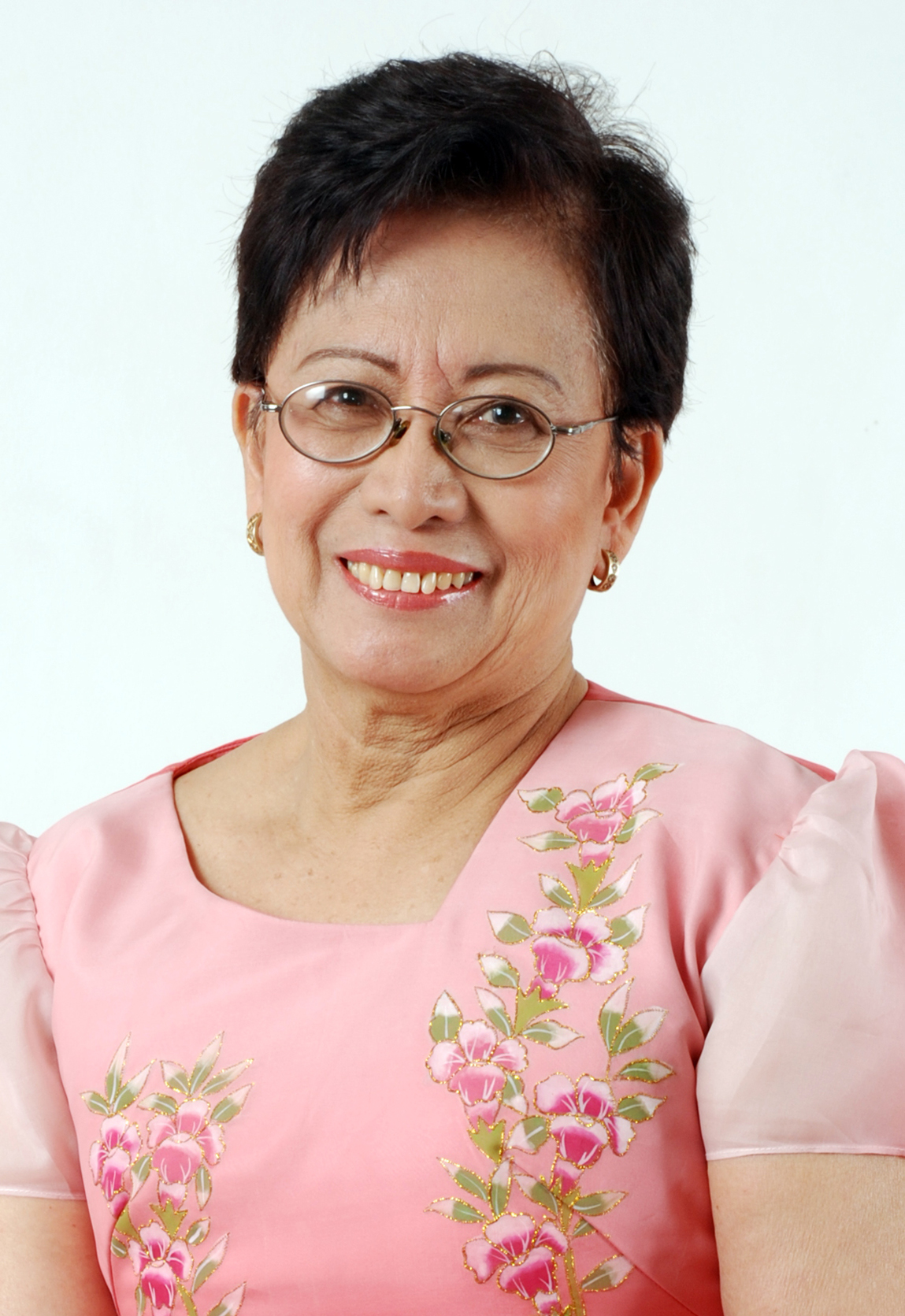 |
DR. ESTRELLA F. ALABASTRO Estrella Fagela Alabastro, was first appointed as Secretary of the Department of Science and Technology in March 2001 and was reappointed on August 30, 2004. She was the first woman to get the DOST portfolio. |
Dr. Alabastro was DOST Undersecretary for Research and Development in 1995-1998; Executive Director of the Philippines Council for Industry and Energy Research and Development (1991-1995); Dean of the College of Home Economics of the University of the Philippines (1984-1990), among other designations.
A registered Chemical Engineer and Career Executive Service Officer, Dr. Alabastro earned her B.S. Chemical Engineering cum laude at the University of the Philippines-Diliman. She went to Rice University in Houston, Texas for her M.S. and Ph.D. in Chemical Engineering.
Dr. Alabastro was editor of several food-related publications, done extensive research works, principal author and co-author of numerous research papers and handbooks on food engineering and processing.
"Nina" or "EFA"--- as fondly called by friends and colleagues--- is married to Edgardo Garcia Alabastro and they have three children.
1999-2001 DR. FILEMON A. URIARTE JR.
 |
DR. FILEMON A. URIARTE JR. Dr. Filemon A. Uriarte Jr. served as Science Secretary from 1999 to 2001. Guided by his vision of “a competent and competitive science and technology with a social conscience,” The Science department launched technology transfer projects to benefit farmers and entrepreneurs in support of the administration’s poverty alleviation program. |
He rolled out different flagship programs. Among the research and development projects completed under his leadership are capsules from carageenan, wind energy conversion, packaging technology for buko pie and biocermaic materials for prosthetics and implants. The Science department also implemented integrated programs on coconut, biotechnology and furniture; productivity enhancements for the mango and saba industries, and seaweed seed stocks improvement.
1994-1999 DR. WILLIAM G. PADOLINA
 |
DR. WILLIAM G. PADOLINA A secretary of the Department of Science and Technology from 1994 to 1998, Dr. Padolina implemented a development agenda that included technological advances in agriculture, manufacturing and services, education program focused on technological systems and industry application, and improvement of research management system. |
Under his watch, the department's development of science and technology human resources gained attention through the Engineering and Science Education Project, the Science and Technology Scholarship Act, and the creation of four new campuses of the Philippine Science High School system (Diliman, Mindanao, Western Visayas, Eastern Visayas). He also implemented the PhNet project, the country's first link to the Internet.
Dr. Padolina shepherded the Magna Carta for science and technology personnel through the legislative mill until it became Republic Act 8439 in 1997. While serving as secretary, he was admitted as member of the New York Academy of Science, and was listed in the Who's Who of the Asia-Pacific Rim. He has received many awards and distinctions including Academician of NAST, Outstanding Young Scientist (1982), and Ten Outstanding Young Men (1985).
1992-1994 DR. RICARDO T. GLORIA
 |
DR. RICARDO T. GLORIA As Science and Technology secretary, Dr. Ricardo Gloria emphasized science and technology extension and commercialization programs. During his tenure, a memorandum of agreement was signed with UP Los Baños for the establishment of the Science and Technology Park that was inaugurated in 1993. |
He worked for the establishment of the first science centrum in Manila, which became a model of science centrums that followed in Iloilo, Cagayan de Oro, Bulacan and Zamboanga. In 1994, the Science and Technology Scholarship Act was passed, which enabled economically disadvantaged but deserving students to obtain college education in science and technology fields. Dr. Gloria was born on April 3, 1940, in Oroquieta, Misamis Occidental.
1989-1992 DR. CEFERINO L. FOLLOSCO
 |
DR. CEFERINO L. FOLLOSCO Dr. Follosco has diverse expertise having graduate degrees in mechanical, electrical, agricultural, and management engineering. He Implemented a modernization strategy for the country's industrial and agricultural systems through the adoption of "leading edge technologies". The strategy included selection of sectors on the basis of potentials in terms of increased production, increased value added, and capacity to expand local production. |
He was chairman of the Science and Technology Coordinating Council created under A.O. 123, and led the formulation of Action Plans and Implementing Programs for the leading edges.
Under his watch, a comprehensive Science and Technology Master Plan (STMP) was drawn focusing on three major strategies: a) Modernization of the production sector through masive technology transfer; b) upgrading of R&D activities; and c) development of infrastructures, institution building, manpower development, and development of S&T culture.
Under the STMP, he initiated programs such as the Comprehensive Technology Transfer Program, Manufacturing Productivity Extension for export modernization, and Technology Business Incubators. He also worked for the inclusion of S&T Parks, Technology Incubators, and R&D activities in the government's investment Priorities Plan. Congress approved the establishment of S&T Provincial Centers nationwide.
The Ateneo de Davao Universivity conferred to him the degree of Doctor of Humanities honoris causa, which the University of the Philippines also awarded him the degree of Doctor of Laws honoris causa.
Dr. Follosco was born on February 3, 1931 in Lanao del Sur.
1986-1989 DR. ANTONIO V. ARIZABAL
 |
DR. ANTONIO V. ARIZABAL Dr. Arizabal assumed the top National Science and Technology Authority (NSTA) position following EDSA 1 and led its transition into the Department of Science and Technology in 1986. He guided the reorganization and staffing of DOST's different institutions, and reviewed their functions. |
Dr. Arizabal put emphasis on technology transfer and commercialization. Food and Nutrition Research Institute's supplementary food formulations were used extensively to feed 80,000 malnourished kids in Negros Occidental during this time.
He implemented contract research agreements and commercialization or technology transfer agreements with private companies on technologies such as improved alcohol production, extraction of essential oils, coconut water beverage production, large capacity lumber kilns, etc.
Dr. Arizabal obtained his BS Chemistry cum laude from the University of the Philippines, and M.S. and Ph.D. in Metallurgy from the Carnegie Institute of Technology.
Dr. Antonio V. Arizabal was bon on October 13, 1932 in Manila.
1981-1986 DR. EMIL Q. JAVIER
 |
DR. EMIL Q. JAVIER In 1981, Dr. Javier initiated the first comprehensive Five-Year Indicative Plan for Science and Technology highlighted by demand-pull strategy in selecting research projects wherein end-users' demands guided the choice of National Science Development Board (NSDB) projects. |
He was at the helm of NSDB when it was reorganized into the National Science and Technology Authority (NSTA) in 1982. Under his leadership, the S&T Council system was created. He also initiated the establishment of science communities in Los Banos, Bicutan, Quezon City and Manila.
During his time, the Scientific Career System was created and E.O. 901 defined its implementing rules and regulations.
Meanwhile, E.O. 889 issued in 1983 established six new research institutes in Diliman and Los Banos broadening NSTA's capability to undertake research in basic sciences.
Dr. Javier obtained his B.S. in Agriculture from the University of the Philippines, M.S. from University of Illinois, and Ph.D. from Cornell University. He is a recipient of numerous awards including the Ten Outstanding Young Men, UPLB Outstanding Alumnus, and NAST Academician.
Dr. Javier was born on September 11, 1940 in Sta. Cruz, Laguna.
1976-1981 DR. MELENCIO S. MAGNO
 |
DR. MELENCIO S. MAGNO He was chairman of the National Science Development Board (NSDB) in 1976 to 1981. He obtained a B.S. in Mining Engineering, and M.S. in Physics from the University of the Philippines (UP). His interests spanned seismology, metrology, meteorology, physics and held administrative positions in these fields in UP. |
He was appointed Minister of the NSDB from 1978 to 1981. He later became President of the Science Foundation of the Philippines, Vice President of the National Academy of Science and Technology, and President of the National Reseach Council of the Philippines.
During his administration, the Philippines for the first time sealed a working relationship with an eastern block country through the Philippine-Romanian Agreement on S&T Cooperation.
Dr. Magno emphasied the importance of developing the country's S&T manpower, and supported undergraduate and graduate science scholarship programs. He also supported the UP Science Education Center in the writing of science textbooks, Summer Science Instiute for teachers to improve science and mathematics instruction, supplied laboratory equipment under the Science Equipment Development Program, and implemented the Balik Scientist Program. He pushed for the establishment of the National Academy of Science and Technology.
Under Dr. Magno, the NSDB pursued mission-oriented R&D programs in different sectors.
Dr. Magno was bon on May 24, 1920 in Muñoz, Nueva Ecija.
1970-1976 GEN. FLORENCIO A. MEDINA
 |
GEN. FLORENCIO A. MEDINA He was the Chairman of the National Science Development Board (NSDB) from 1970 to 1976. He went to the University of the Philippines for his B.S. and M.S. degrees in Chemistry, and was also a Doctor of Science. Before his stint at NSDB, he was Chief of the Research and Development Center of the Armed Forces of the Philippines, and later Commissioner of the Philippine Atomic Energy Commission. While NSDB Chairman, he was also elected Chairman of the International Atomic Energy Agency in Vienna. |
Dr. Medina worked with Congress and helped in drafting the science and technology provisions in the 1973 Constitution. In 1972, P.D. 48 created the Philippine Council for Agricultural Research. In 1973, he worked for a separate budget for the Food and Nutrition Research Center. His efforts also resulted to the extension of tax collection on motor vehicles for the Special Science Fund (which would have ended in 1974) until 1982.
He steered NSDB to pursue R&D on import substitutes especially those related to basic commodities.
Dr. Medina was bon on November 7, 1905 in Batangas City
1963-1970 DR. JUAN S. SALCEDO
 |
DR. JUAN S. SALCEDO He was the Chairman of the National Science Development Board (NSDB) from 1963 to 1970, He was a medical doctor and had several public service responsibilities before his appointment to NSDB. He received several awards such as the Ramon Magsaysay Award for Public Health, Republic Heritage Award for Science, Pro Patria Award, and the rank of National Scientist. |
Through the efforts of Dr. Salcedo, Presidential Decree No. 376 was issued in 1968, allocating for the science community a 35.6-hectare piece of Fort Bonifacio in Bicutan, Taguig.
He also mounted a lobby in Congress for the creation of a Special Science Fund that will come from the proceeds of taxes on motor vehicles and documentary stamps on offical papers. These were passed in 1969 through R.A. No. 5448 and 5470. He was also active in resource generation efforts, and NSDB received donations of science equipment and books that were distrubuted to different schools.
In anticipation of proceeds from the Special Science Fund, Dr. Salcedo formulated programs aimed to develop the nation's science resources, and use such resources to accelerate economic, social, and cultural progress. He encouraged the holding of summer intitutes and regional conferences for science teachers, and writing of science textbooks.
Dr. Salcedo was born on September 29, 1904 in Pasay City.
1958-1963 DR. PAULINO J. GARCIA
 |
DR. PAULINO J. GARCIA Born on February 6, 1907 in Gapan, Nueva Ecija, Dr. Paulino Garcia became the Chairman of the National Science Development Board form the time it was created in 1958 until 1963. He worked with friends in Congress to get the board tax exemption on imported science equipment and supplies. |
Dr. Garcia vigorously pursued infrastructure development projects, such as the construction of the Atomic Research Center building, and sponsored the Cadang-cadang Research Foundation to save the coconut industry, the country’s most valuable export earner at the time. He worked for the passage of Republic Act 3661, which created the Philippine Science High School as an attached agency of National Science Development Board (NSDB).
Announcements
- Call for Application - 2025 MECO-TECO Sandwich Scholarship Program (SSP)
- Call for Proposals: 2025 MECO-TECO Joint Research Program
- Call for Proposals: 2024 DOST-JST JOINT RESEARCH PROJECT ON WATER SECURITY
- Open Application for 2025: Leadership Development Program in Japan- IATSS Forum
- Call for Proposals: 2025 DOST-JSPS Joint Research Project (JRP)
- Call for Proposals: 2024 Philippines-Korea Joint Science & Technology Research Program
- Scholarship Announcement
- Call for Proposal: 2024 DOST-MOST Joint Research Project
- Call for Proposals: 2024 MECO-TECO Joint Research Project
- 2023 Global Research Council Asia Pacific Regional Meeting
- Call for Proposals: 2024 DOST-Japan Society for the Promotion of Science (JSPS) Joint Research Project
- Social Media Cards Against Online Sexual Abuse and Exploitation (OSAEC)
- DOST-CO Enhanced Community Quarantine Advisory to the Public
- Wave of Action: DOST Water Programs and Technologies
- Implementing Guidelines for the Startup Grant Fund of the Department of Science and Technology
- SALIKSIK R&D Briefer
- Science, Technology and Action Nexus for Development (STAND)
- NOTICE TO THE PUBLIC - Abolition of the Technology Resource Center (TRC)
- Postings at the DOST Website
Today's Outlook
|
DAILY WEATHER FORECAST |
|
|
EARTHQUAKE, VOLCANO and TSUNAMI BULLETINS |
|
 |
CLIMATEX |











